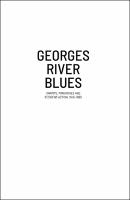Georges River Blues
Swamps, Mangroves and Resident Action, 1945–1980
| dc.contributor.author | Goodall, Heather | |
| dc.date.accessioned | 2022-02-23T11:22:04Z | |
| dc.date.available | 2022-02-23T11:22:04Z | |
| dc.date.issued | 2022 | |
| dc.identifier | ONIX_20220223_9781760464639_2 | |
| dc.identifier | OCN: 1295220265 | |
| dc.identifier.uri | https://library.oapen.org/handle/20.500.12657/53116 | |
| dc.description.abstract | The lower Georges River, on Dharawal and Dharug lands, was a place of fishing grounds, swimming holes and picnics in the early twentieth century. But this all changed after World War II, when rapidly expanding industry and increasing population fell heaviest on this river, polluting its waters and destroying its bush. Local people campaigned to defend their river. They battled municipal councils, who were themselves struggling against an explosion of garbage as population and economy changed. In these blues (an Australian term for conflict), it was mangroves and swamps that became the focus of the fight. Mangroves were expanding because of increasing pollution and early climate change. Councils wanted to solve their garbage problems by bulldozing mangroves and bushland, dumping garbage and, eventually, building playing fields. So they attacked mangroves as useless swamps that harboured disease. Residents defended mangroves by mobilising ecological science to show that these plants nurtured immature fish and protected the river's health. These suburban resident action campaigns have been ignored by histories of the Australian environmental movement, which have instead focused on campaigns to save distant 'wilderness’ or inner-city built environments. The Georges River environmental conflicts may have been less theatrical, but they were fought out just as bitterly. And local Georges River campaigners – men, women and often children – were just as tenacious. They struggled to ‘keep bushland in our suburbs’, laying the foundation for today’s widespread urban environmental consciousness. | |
| dc.language | English | |
| dc.relation.ispartofseries | World Forest History Series | |
| dc.subject.classification | thema EDItEUR::N History and Archaeology::NH History::NHM Australasian and Pacific history | en_US |
| dc.subject.classification | thema EDItEUR::J Society and Social Sciences::JP Politics and government::JPW Political activism / Political engagement::JPWG Pressure groups, protest movements and non-violent action | en_US |
| dc.subject.classification | thema EDItEUR::R Earth Sciences, Geography, Environment, Planning::RN The environment::RNB Environmentalist, conservationist and Green organizations | en_US |
| dc.subject.classification | thema EDItEUR::R Earth Sciences, Geography, Environment, Planning::RN The environment::RNF Environmental management | en_US |
| dc.subject.classification | thema EDItEUR::R Earth Sciences, Geography, Environment, Planning::RN The environment::RNK Conservation of the environment | en_US |
| dc.subject.classification | thema EDItEUR::R Earth Sciences, Geography, Environment, Planning::RN The environment::RNP Pollution and threats to the environment | en_US |
| dc.subject.other | environment campaign | |
| dc.subject.other | swamps | |
| dc.subject.other | mangroves | |
| dc.subject.other | resident action | |
| dc.subject.other | reclamation | |
| dc.title | Georges River Blues | |
| dc.title.alternative | Swamps, Mangroves and Resident Action, 1945–1980 | |
| dc.type | book | |
| oapen.identifier.doi | 10.22459/GRB.2021 | |
| oapen.relation.isPublishedBy | ddc8cc3f-dd57-40ef-b8d5-06f839686b71 | |
| oapen.relation.isbn | 9781760464639 | |
| oapen.relation.isbn | 9781760464622 | |
| oapen.imprint | ANU Press | |
| oapen.pages | 328 | |
| oapen.place.publication | Canberra |

